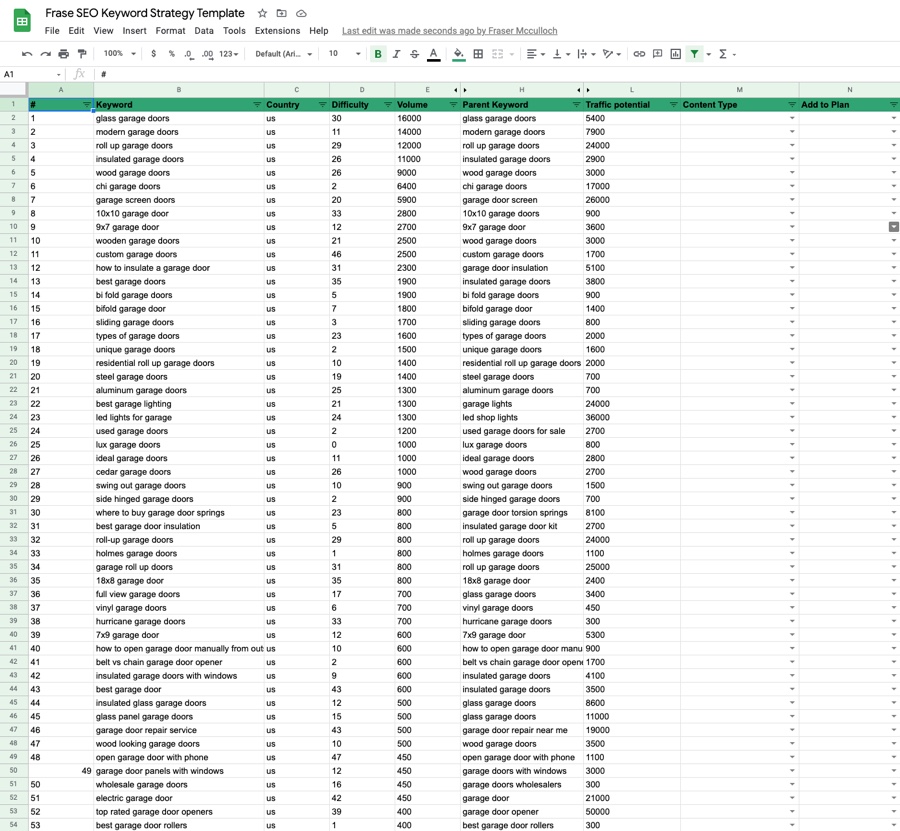
In today’s digital landscape, where consumers are more informed and selective than ever, businesses must adapt their marketing strategies to align with user intent. One of the most powerful tools in this effort is conversion-intent keyword targeting. This approach focuses on identifying and leveraging search terms that signal a high likelihood of conversion—such as purchases, sign-ups, or other desired actions. In this article, we’ll explore how conversion-intent keywords shape modern SEO, why they matter, and how to implement them effectively for better results.
What Is Conversion-Intent Keyword Targeting and Why It Matters
Conversion-intent keywords are search terms that indicate a user is ready to take action. These might include phrases like “buy [product]”, “best [service] near me”, or “[product] reviews”. Unlike informational or navigational keywords, which are used for research or direct navigation, conversion-intent keywords reflect a clear desire to engage with a product or service.
For marketers, this distinction is crucial. By targeting these high-intent queries, businesses can attract users who are further along in the buying journey, increasing the chances of converting them into customers. According to data from Semrush (U.S. database, February 2025), commercial intent keywords drive significant organic traffic to major retailers, including Best Buy, Kay.com, and Amazon. This highlights the growing importance of aligning content with user intent to maximize ROI.
Understanding conversion-intent keywords also helps businesses refine their SEO strategies. Rather than chasing broad, competitive keywords, companies can focus on specific, high-value terms that lead to tangible outcomes. This not only improves visibility but also enhances the overall effectiveness of marketing efforts.
How Conversion-Intent Keywords Impact SEO Performance
The influence of conversion-intent keywords on SEO performance is multifaceted. Here’s how they impact key metrics:
1. Improved Traffic Quality
By targeting high-intent keywords, you attract users who are more likely to convert. This means the traffic you receive is not just about volume but about relevance and engagement. For example, a user searching for “best [product]” is more likely to be in the consideration stage of the buyer’s journey than someone looking up “what is [product]”.
2. Higher Conversion Rates
Studies show that content optimized for conversion-intent keywords leads to higher conversion rates. This is because users who land on your site via these keywords are already primed to take action. Whether it’s signing up for a newsletter, downloading a resource, or making a purchase, the likelihood of conversion increases significantly.
3. Better User Experience
When your content matches user intent, it naturally leads to a better experience. Users find what they’re looking for faster, reducing bounce rates and increasing dwell time. Search engines like Google take these signals into account when determining rankings, creating a positive feedback loop.
4. Enhanced E-E-A-T Signals
Google’s E-E-A-T (Experience, Expertise, Authoritativeness, Trustworthiness) guidelines emphasize the importance of content that meets user needs. By focusing on conversion-intent keywords, you demonstrate that your content is both relevant and valuable, improving your site’s authority and trust score.
Step-by-Step Implementation Framework
To effectively implement conversion-intent keyword targeting, follow this structured approach:
1. Define or Audit the Current Situation
Start by analyzing your current keyword strategy. Use tools like Ahrefs, SEMrush, or Google Keyword Planner to identify which keywords are driving traffic and conversions. Look for patterns in user behavior and assess whether your content aligns with their intent.
2. Apply Tools, Methods, or Tactics
Use keyword research tools to uncover high-intent keywords. Focus on long-tail keywords that are specific and have lower competition. Tools like Senuto’s Keyword Explorer or Semrush’s Keyword Magic Tool can help you identify opportunities. Additionally, analyze competitor websites to see which keywords they are targeting.
3. Measure, Analyze, and Optimize
Track the performance of your conversion-intent keywords using analytics platforms like Google Analytics or Semrush’s Position Tracking. Monitor metrics such as click-through rate (CTR), bounce rate, and conversion rate. Use A/B testing to refine your content and improve results over time.
Real or Hypothetical Case Study
Let’s look at a hypothetical case study involving an e-commerce brand selling smart home devices. The company noticed that while their site was receiving a lot of traffic, the conversion rate was low. Upon analysis, they found that their content was optimized for general keywords like “smart home” rather than conversion-intent terms like “best smart thermostat for energy savings”.
By shifting their focus to high-intent keywords, they saw a 30% increase in traffic from targeted searches and a 20% rise in conversions. They also improved their position in the SERPs for key terms, leading to increased brand visibility and customer trust.
Tools and Techniques for Conversion-Intent Keyword Targeting
Several tools can help you identify and optimize for conversion-intent keywords:
- Semrush: Offers advanced keyword research with intent classification, allowing you to filter for commercial or transactional keywords.
- Ahrefs: Provides detailed keyword insights, including search volume, keyword difficulty, and content suggestions.
- Google Keyword Planner: Useful for finding keyword ideas and assessing search volume, though it lacks intent data.
- SurferSEO: Helps with keyword clustering and semantic scoring to ensure your content is aligned with user intent.
- SEMrush’s Keyword Gap Tool: Identifies gaps in your keyword strategy compared to competitors.
- AnswerThePublic: Visualizes questions and topics related to your keywords, helping you understand user intent.
Future Trends and AI Implications
As AI continues to evolve, the role of conversion-intent keyword targeting will become even more critical. With the rise of voice search and multimodal experiences, users are increasingly using natural language to express their intent. This means that traditional keyword research may need to adapt to capture conversational queries and intent-driven language.
Additionally, AI-powered tools like Google’s Search Generative Experience (SGE) are changing how users interact with search results. Businesses must now create content that not only targets high-intent keywords but also aligns with the way AI systems interpret and present information.
To stay ahead, consider incorporating AI-driven keyword research and optimizing content for both human and machine readability. This will ensure your content remains relevant and effective in an ever-changing digital landscape.
Key Takeaways
- Conversion-intent keywords are essential for attracting users who are ready to take action.
- Focusing on these keywords improves traffic quality, conversion rates, and user experience.
- Tools like Semrush, Ahrefs, and SurferSEO can help identify and optimize for high-intent keywords.
- Regularly analyze and refine your keyword strategy to stay ahead of the competition.
- As AI and SGE continue to evolve, aligning with user intent will be more important than ever.
By mastering conversion-intent keyword targeting, you can create a more effective SEO strategy that drives real business results. Start implementing these tactics today and watch your conversions soar.
Meta Title: Conversion-Intent Keyword Targeting — Boosting Marketing Effectiveness in 2025
Meta Description: Learn how to leverage conversion-intent keywords to boost your marketing ROI and improve SEO performance in 2025.
SEO Tags (5): conversion-intent keywords, SEO strategy, high-converting keywords, user intent, conversion rate optimization
Internal Link Suggestions:
– [Parameter #1: Search Intent Alignment]
– [Parameter #8: Content Gap Filling]
– [Parameter #10: Updated Data & References]
External Source Suggestions:
– https://www.semrush.com/
– https://ahrefs.com/
– https://support.google.com/google-ads/








